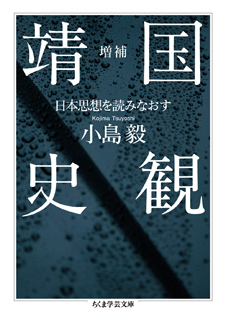
Title
Syukyo wo Shinrigaku suru (The Psychology of Japanese Religiosity: A Data-Based Perspective)
Size
220 pages, A5 format
Language
Japanese
Released
July 25, 2016
ISBN
978-4-414-30009-3
Published by
Seishin Shobo
Book Info
See Book Availability at Library
Japanese Page
Many Japanese regard themselves as “nonreligious,” but is this really the case? Most Japanese are unaware that they are involved in various ways in matters concerned with religion, because they simply fail to notice. Furthermore, many Japanese seem to be wedded purely to the construct that “religion” can be equated with “belief.” Religiosity (involvement in matters associated with religion) includes not only belief (intellectual aspects) but also feelings (emotional aspects) and actions (behavioral aspects). In this book, based on the results of the Japan Multidimensional Assessment of Religion and Spirituality (J-MARS) study, we argue that Japanese people exhibit religiosity in various ways. The J-MARS project involved a series of empirical investigations that utilized both qualitative and quantitative research methods including fieldwork, interviews, and questionnaire surveys.
The data described in this book pertain to numerous areas. When we encounter the natural world—for example, in the form of the ocean or mountains—we often feel a sense of nature’s grandeur, or that the divine is present in nature. In this book, we define this awareness or feeling as “a religious view of nature.” In the J-MARS questionnaire survey, 39.6% of respondents (n=2618/6613) reported having had this type of experience. Although not all respondents had experienced this feeling, these survey results suggest that it may be meaningful to examine their emotions and beliefs.
We also examine religiosity in disaster-affected regions including fieldwork and interviews at the yearly Buddhist candle ceremony held in an area affected by the Great Hanshin-Awaji Earthquake, as well as a questionnaire survey about the awarding of graduation certificates to schoolchildren who had died before they were able to graduate in areas affected by the Great East Japan Earthquake. In these investigations, we observed the behavior of “comforting the spirits of the dead.”
In addition, the book makes several attempts to identify a “Japanese religiosity,” which is hard to discern when the focus is on belief alone, by addressing the issues of “spirituality,” a term increasingly heard in a range of situations in recent years; the existence of a “Shinto-based narrative” that permeates our lives as Japanese, but of which we are almost unaware; and the nature of the religiosity held by Japanese who consider themselves as having “no faith.”
The nature of religion and religiosity is a major contemporary issue (e.g., conflict between the Judeo-Christian and Islamic worlds). As such, the religion and religiosity of Japanese people could be another important piece of a larger picture, and we hope this book will prompt reflection on the topic.
(Written by Kobo Matsushima, Assistant Professor, Graduate School of Arts and Sciences / 2018)



 Find a book
Find a book






